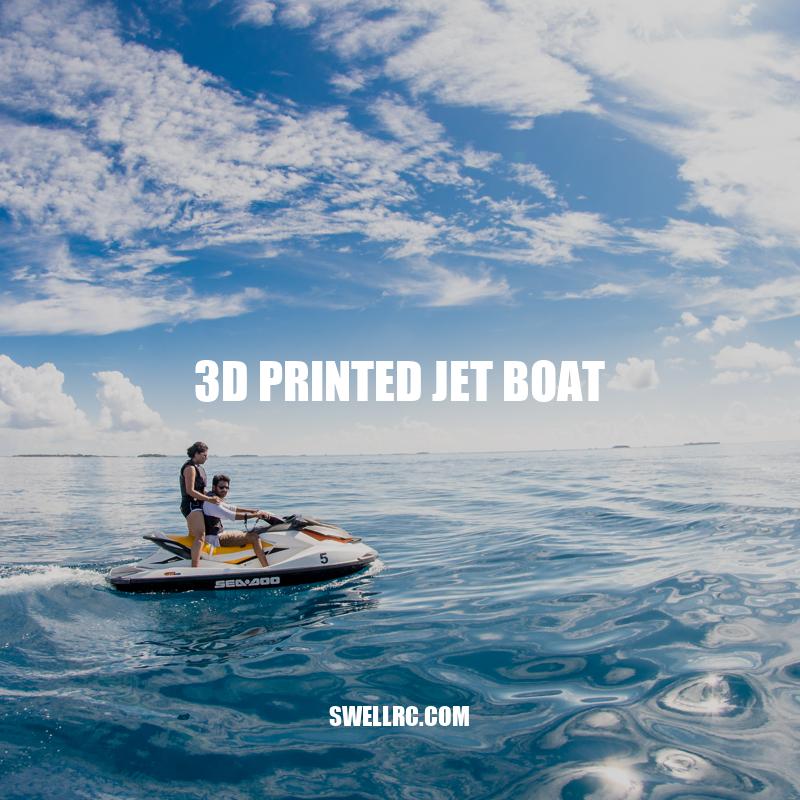Revolutionizing Boat Manufacturing with 3D Printing Technology
3D printing, also known as additive manufacturing, is a revolutionary technology that is disrupting traditional manufacturing processes across various industries. It involves building a three-dimensional object by stacking thin layers of materials on top of each other until the final product is formed. The use of this technology in the marine industry is gaining popularity, and it is not difficult to see why. One of the most exciting applications is the creation of 3D printed jet boats. These boats are designed using 3D modeling software and fabricated using specialized 3D printers capable of producing high-strength and durable materials. 3D printing technology offers several advantages, including reducing production time and costs, providing greater design flexibility, and enabling customization. These benefits make it an attractive option for boat manufacturers looking to innovate and stand out in a competitive market. In this article, we will take a closer look at the emergence of 3D printed jet boats, their benefits, and their impact on the marine industry.
Advantages of 3D printed jet boats
The use of 3D printing technology in the production of jet boats offers several advantages over traditional manufacturing techniques. Here are some of the benefits:
- Lightweight construction: One of the key advantages of 3D printed jet boats is their lightweight construction, which results in increased fuel efficiency, speed, and maneuverability.
- Design flexibility: 3D printing allows for greater design flexibility, with intricate details and complex shapes that are impossible to produce using traditional methods.
- Customization: The technology enables customization, so a 3D printed jet boat can be tailored to meet a customer’s specific needs.
- Reduced waste: 3D printing produces less waste by using only the materials needed for the product, so there is less environmental impact.
- Faster prototyping: The technology allows for faster prototyping and testing of different designs, leading to quicker product development and market launch.
- Cost-effective production: 3D printing can be a cost-effective method of production for low-volume or complex products, eliminating the need for expensive molds and tooling.
As 3D printing technology advances, we can expect more manufacturers to embrace this method of production for jet boats and other marine products. Some companies, such as Malibu Boats and Super Air Nautique, are already using 3D printing for their boat components, while others are exploring the potential for larger-scale 3D printed boats. The emergence of 3D printed jet boats is an exciting development in the marine industry and paves the way for new and innovative designs in the future.
What are the advantages of a jet boat?
Jet boats have several advantages over traditional propeller boats. The most significant is their ability to operate in shallow water, making them ideal for cruising rivers and lakes. They also have no external propeller, reducing the risk of injury to swimmers and marine life. Additionally, jet boats can maneuver quickly and are more fuel-efficient than prop boats. If you’re interested in buying a jet boat or learning more about their features, check out websites such as Yamaha Boats and Scarab Boats.
Examples of 3D Printed Jet Boats
The use of 3D printing technology in boat manufacturing is a relatively new trend, but it has already produced some exciting examples of 3D-printed jet boats. Here are some of the notable examples:
| Boat Name | Manufacturer | Key Features |
|---|---|---|
| BOWA3 | University of Maine |
|
| Spirit | Impossible Objects |
|
| 3D-Printed Jet Ski | Bollinger Motors |
|
In addition to the examples listed above, more companies are exploring the use of 3D printing technology in boat manufacturing. At present, some have already incorporated this technology to their boat manufacturing process while others have expanded their product ranges. Because of this technology, customization and innovative designs can be readily available at less cost and higher quality.
The emergence of 3D printed jet boats is just the beginning, and the use of this technology in the marine industry is expected to be on the rise. With its cost-efficient and time-saving production process, we can expect to see more advanced boats hitting the waters in the near future.
How has technology changed boats?
Boats have significantly changed with the advent of technology. The advanced technology has made the boats easy to handle through joystick control, more stable with gyro-stabilization, and smoother with innovative hull designs. Navigation has also become easier with GPS-enabled multifunction displays (MFDs).
Conclusion
The 3D printing technology has revolutionized many industries, including the marine industry. The benefits of this technology in boat manufacturing are numerous, including cost reduction, design flexibility, and faster prototyping. Although it is still a new trend, we have already seen some interesting examples of 3D printed jet boats. However, there are challenges that need to be addressed such as the limited size of printers. As this technology becomes more advanced and widespread, it is expected that more companies will embrace it to create innovative boat designs that are more efficient and eco-friendly. Ultimately, 3D printing technology will bring about new possibilities for the marine industry and revolutionize the way boats are designed and manufactured in the future.



